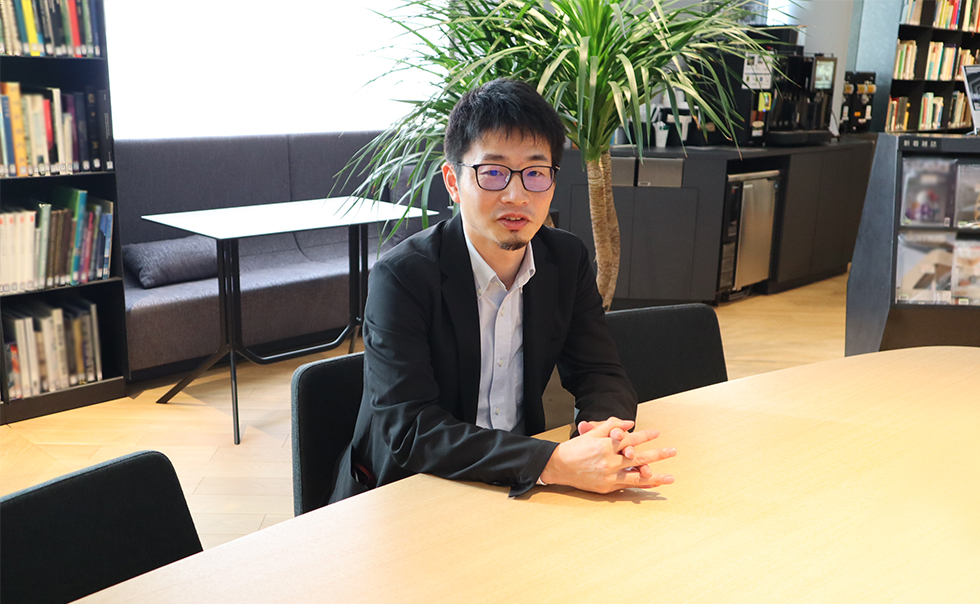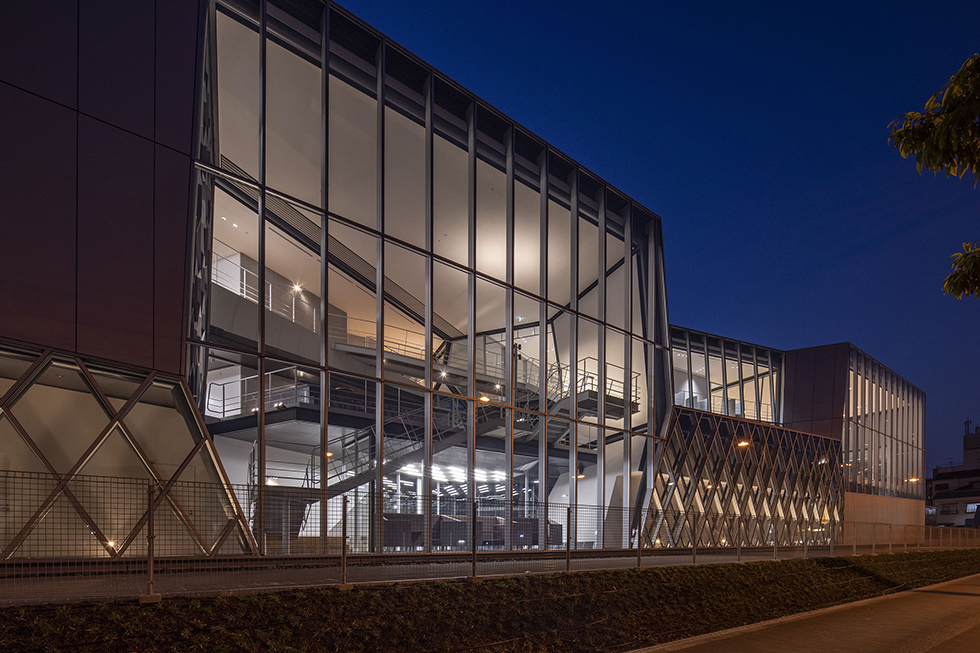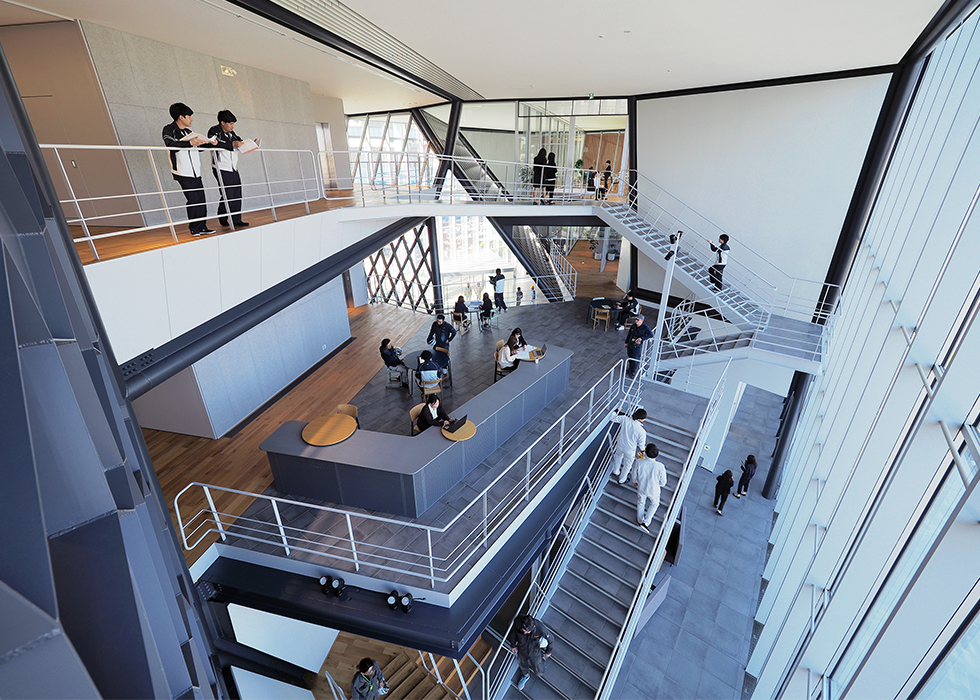
”Steel Nest” Sanei Construction Steel Structure Division New Office
IT technology and human wisdom
The development of IT and robot technologies such as IoT, big data, and AI is changing the manufacturing environment. In the construction industry, these technologies have begun to be used to address issues such as productivity improvement and a shortage of human resources.
Takenaka is promoting the use of AI in structural design and robots in the transportation of materials at work sites, and we are also actively promoting the use of IT in projects.
In this issue, we will introduce the ”Steel Nest” Sanei Construction Steel Structure Division New Office which was completed in October 2020, making full use of IT technologies such as BIM*1 and computational design*2 in the process from design to construction.
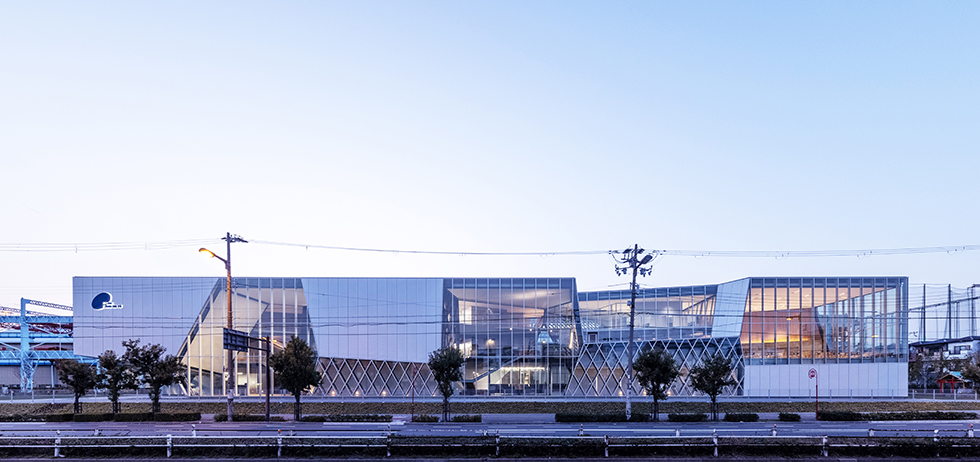
Distinctive appearance of the new offices of ”Steel Nest” Sanei Construction Steel Structure Division
- *1BIM :A system that reproduces a virtual building or the rooms, equipment, and components that make up the building on a computer with a 3D model. In addition to reproducing 3D models, attribute information such as specifications, performance, and prices of equipment and components can be linked.
- *2Computational design :This tool allows you to create a design plan before starting a specific design by simulating elements such as solar radiation and structural performance using advanced mathematical methods and computer calculation capabilities. Using it makes it possible to create design plans with innumerable patterns that exceed the limits of human thinking.
Activate communication through "Voronoi partition" design
The customer, Sanei Construction, is our partner company of Tekanaka that manufactures steel frames. The rapid increase in the number of employees has raised the issue of communication. In addition, there was a need to create a building that would become a "steel showroom" capable of realizing steel frame processing technology.
In order to stimulate communication, which was the first need, we decided to use a mathematical method called Voronoi partitions*3 to determine the shape of the spaces.
Compared to a typical space with a vertical wall and a horizontal floor, there are more adjoining rooms and faces that touch the upper and lower floors, so employees have more opportunities to encounter each other.
- *5This is a method of dividing the nearest neighboring area of each parent point by drawing a vertical bisector on a line connecting the neighboring parent points (In the case of three-dimensional Voronoi partition, the region is divided by a vertical bisector(on a plane) between the parent points.)
You can see designs similar to Voronoi diagrams in nature, for example, foam, giraffe patterns and leaf veins.
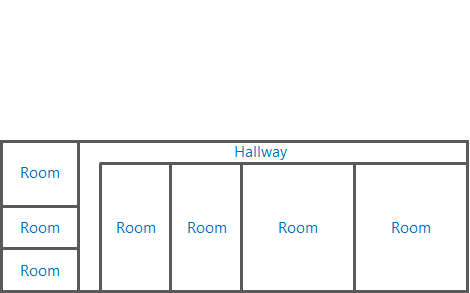
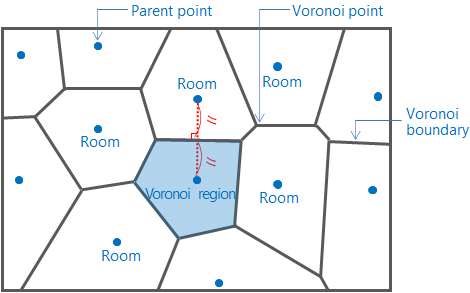
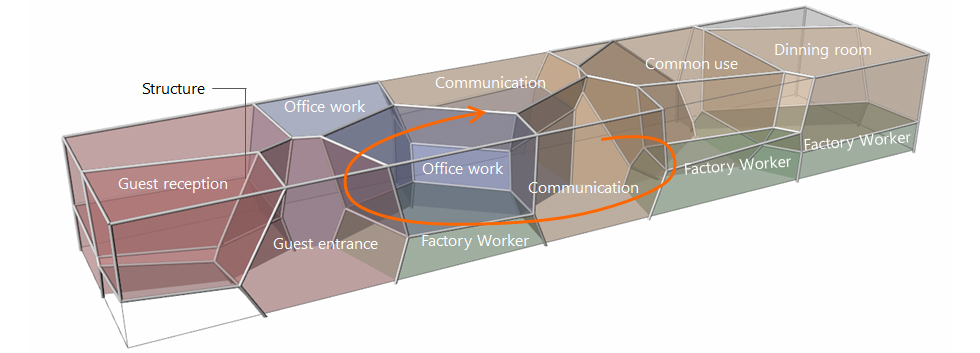
Model of space connected in three dimensions by Voronoi partitions
Exceeding the limits of thinking with computational design
If you try to determine a layout that meets the necessary conditions such as the number and area of rooms by Voronoi partition, a very complicated calculation is required. Therefore, using computational design, we automatically created a huge number of 10,000 arrangement patterns based on the specified coordinate axes. From there, we set evaluation axes to activate communication, such as the connections between areas and the number of atriums connecting the upper and lower floors, and then we narrowed these down to several proposals using optimization technology. At the end, the designer created the design by selecting an optimum pattern that took advantage of the characteristics of each room and design of the spaces.
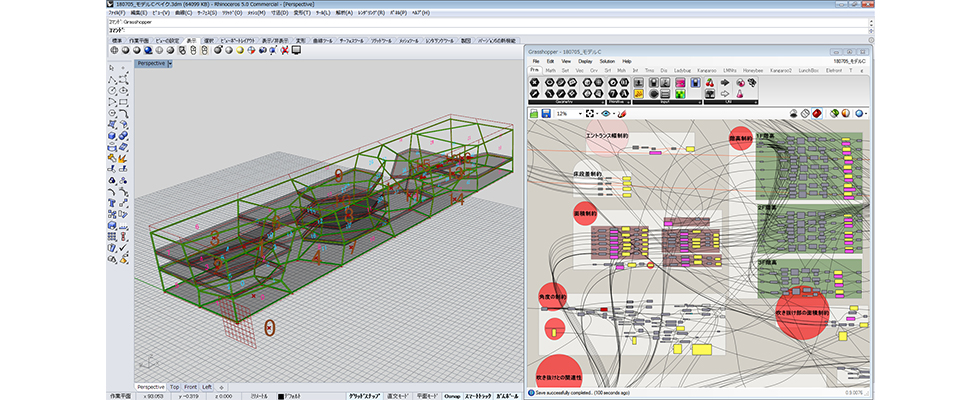
Design creation by computational design
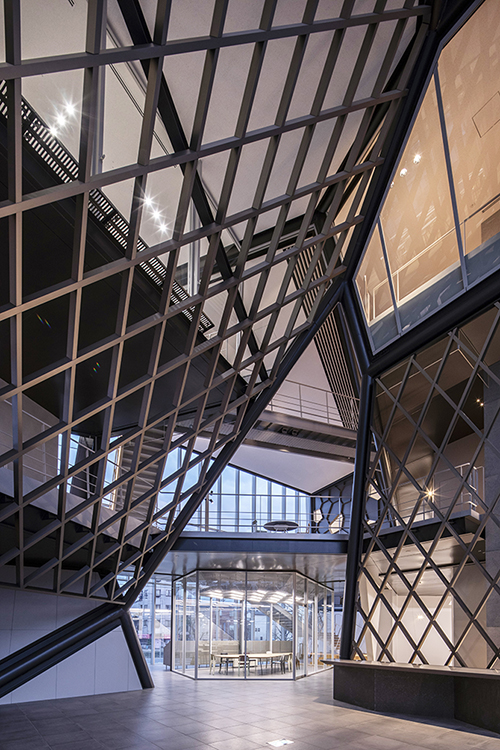
Dynamic angle entrance
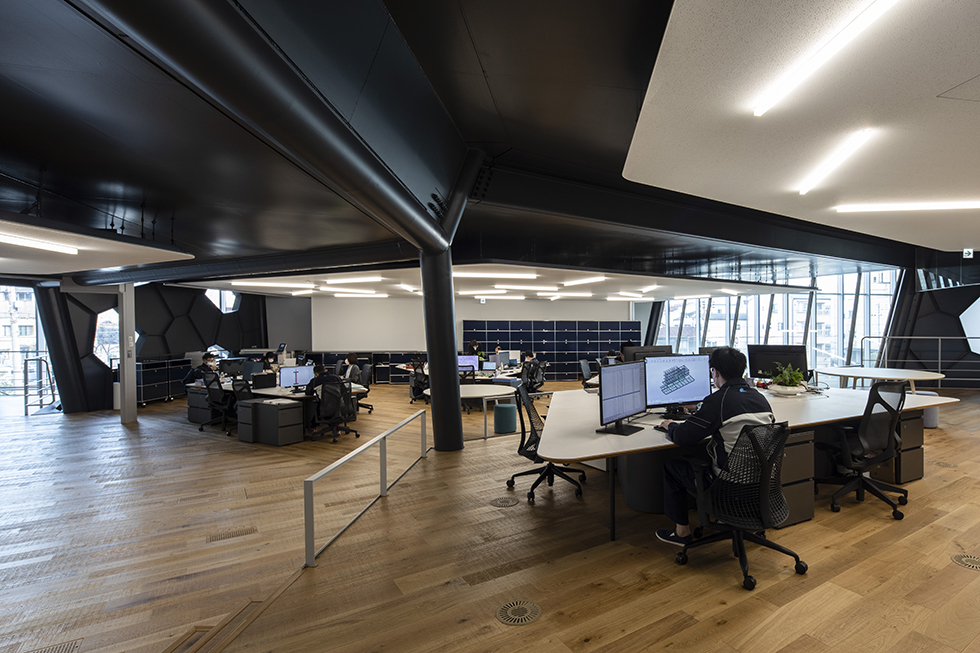
Office with few inclined walls
"Steel showroom" where all structures are made of steel
In order to create a space that will become the second need, an "Steel showroom," we adopted a design that exposed a structure normally hidden by the finish. "Voronoi aseismic wall" with a motif of Voronoi partitions and a "crosshatch brace," which is a latticework assembly of narrow steel pipes, ensure earthquake resistance and building strength, have design character and give a dynamic impression to visitors. By using high-strength cast iron for the connecting parts of the columns, steel plates for the floors, where concrete is generally used, and by making the entire structure with Steel, we have realized an "Steel showroom" that embodies the customer's technical capabilities.
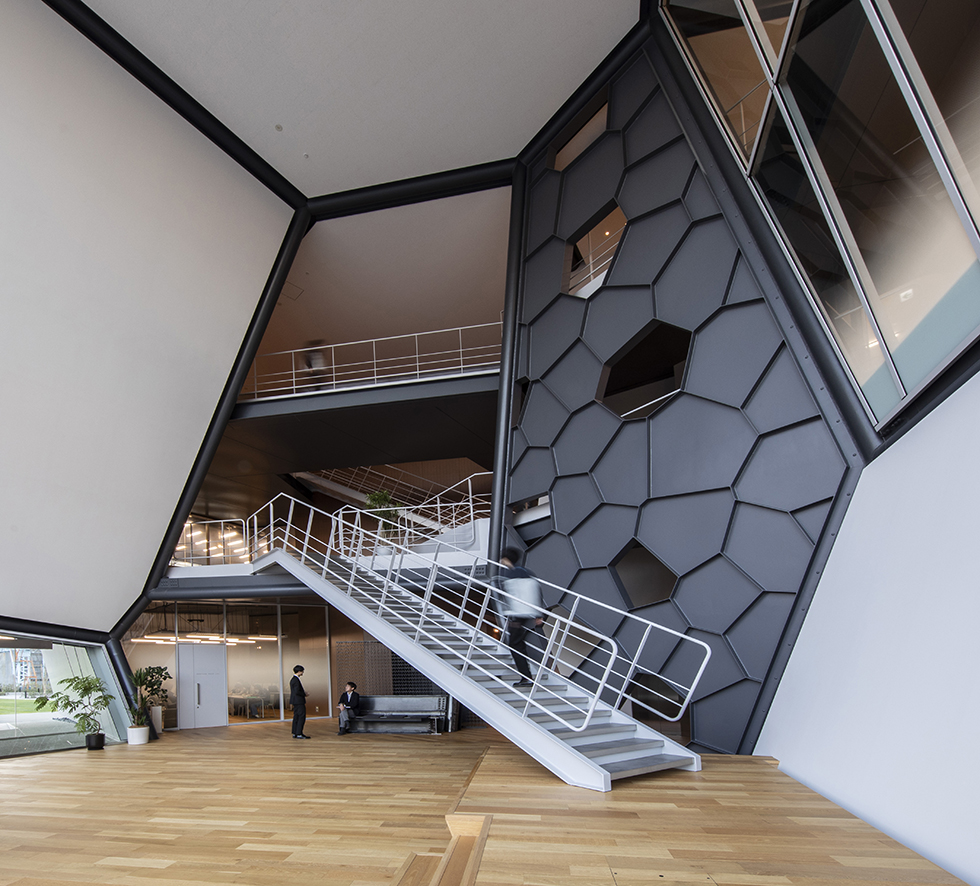
Entrance welcoming visitors with "Voronoi aseismic wall"
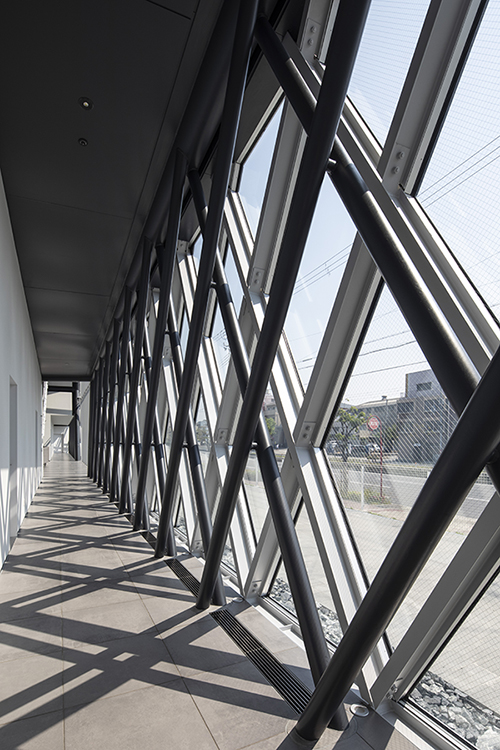
"Crosshatch brace" that maintains building strength
Realizing a building with complex shapes using BIM
Most of the columns and beams in this building are inclined rather than horizontal, so it was impossible to represent them all in a 2D drawing. We therefore used BIM to recreate a 3D model of the building on a computer. BIM was essential for building complex structures that did not have the same components.
By creating a BIM model, it was possible to design energy savings through environmental simulations such as airflow and thermal loads, and to smoothly share information and form consensus among the parties involved, such as checking construction procedures and whether there was any interference with members.
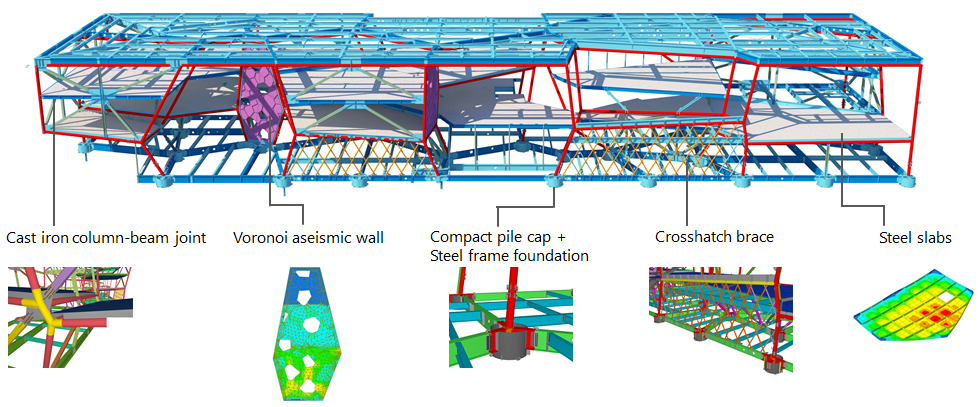
3D model of steel frame created with BIM
When it was difficult to check things on a computer, we used models created on 3D printers with BIM data and full-scale mock-ups, and we conducted detailed verification in the stages before actually starting construction.
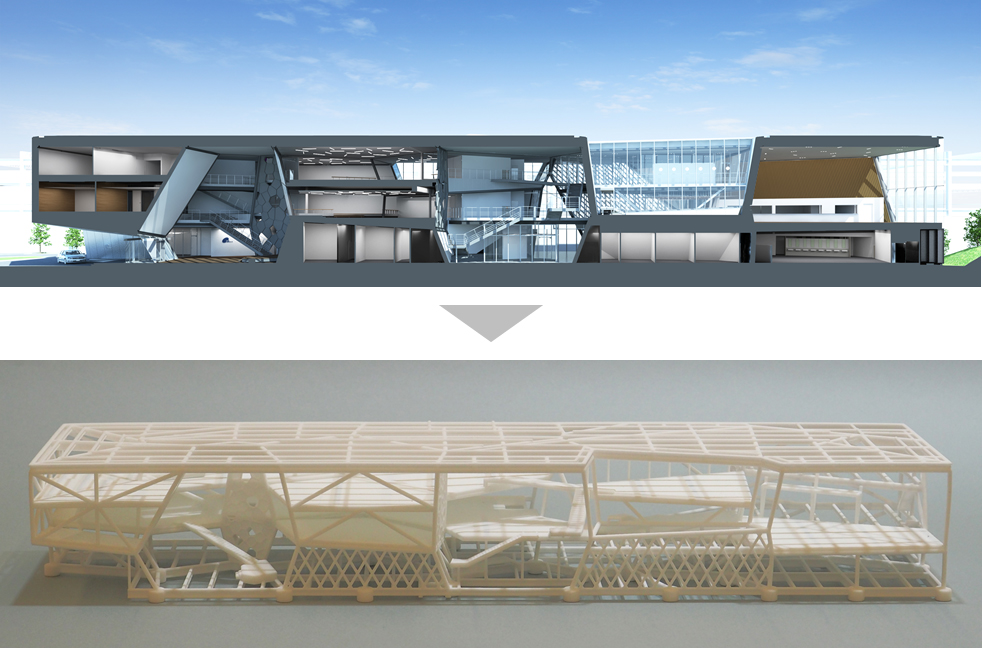
3D printer model using BIM model
In the cutting and processing of members with complicated shapes, moreover, we have realized high-precision components manufacturing and smooth work by performing digital fabrication*6 that utilized BIM data.
- *6 digital fabrication :
Technology that uses digital data to create things with computer-connected digital machine tools such as 3D printers and laser cutters
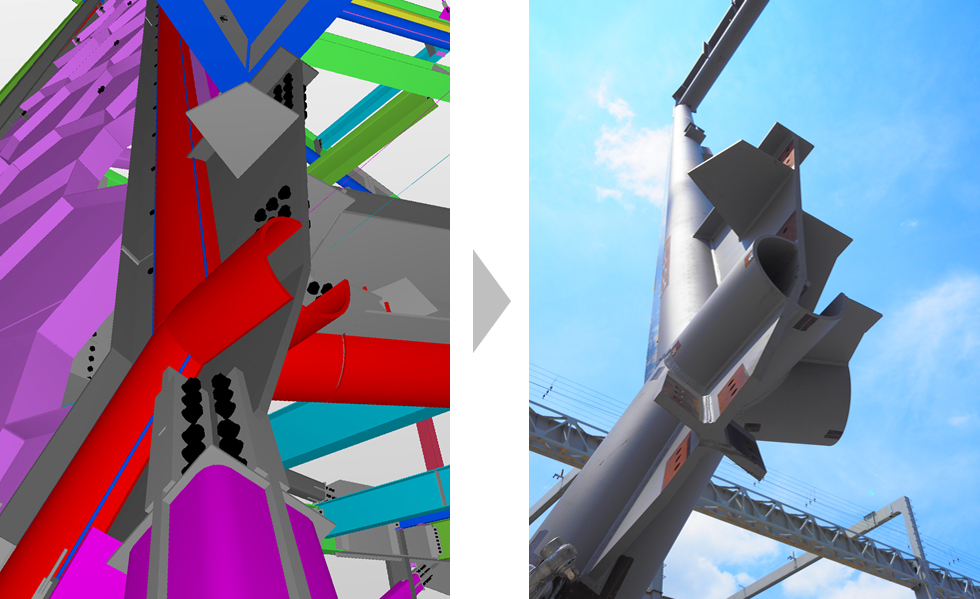
BIM model and actual steel frame
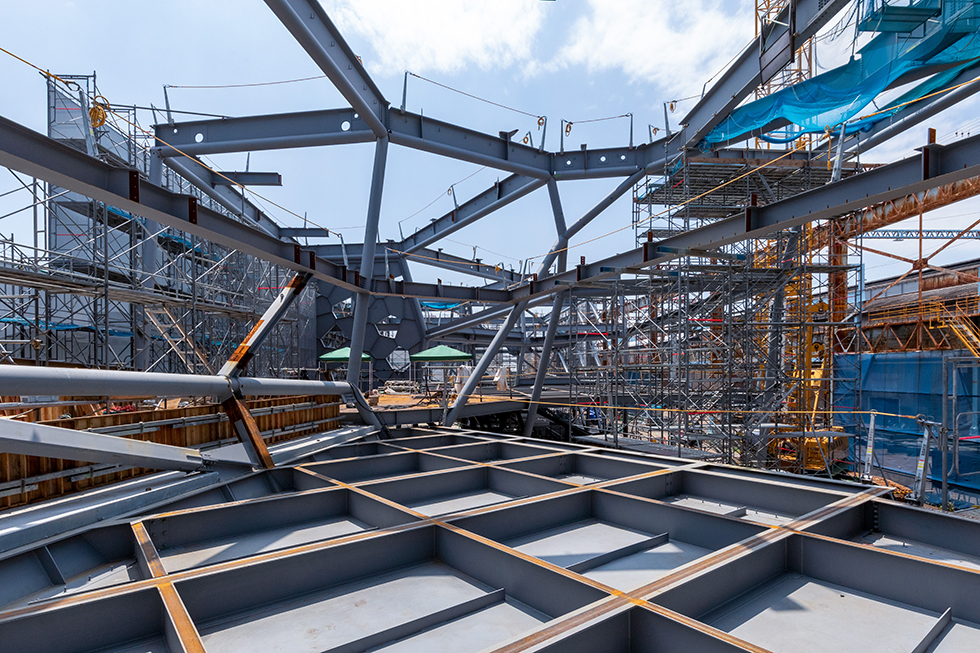
Assembling members with complex shapes
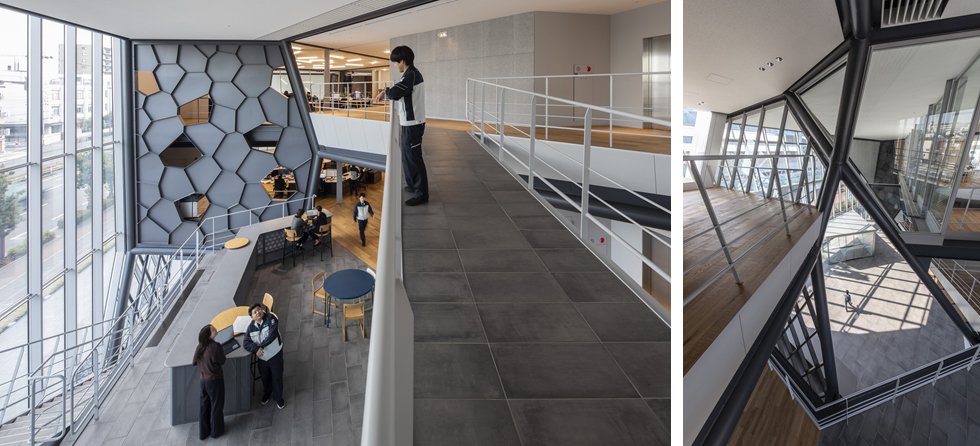
Achieving highly accurate parts with complex shapes
The original building, which goes beyond the conventional concept of architecture, was born from the fusion of cutting-edge technology and human wisdom. The customer also judged that communication increased due to chance encounters. Together with exploiting the strengths of our Integrated Design-Build System, we would like to respond to the aspirations of a variety of customers by fully utilizing BIM and other technologies.
People in Charge
In charge of architectural design, Seiji Tanaka
In today's architecture where the horizontal and vertical are presumed, this was a very challenging project to contend with in 3D as many structures were inclined.
I think it was the combination of steel fabricator technology, worker experience and craftsmanship as well as the latest BIM technology that enabled us to realize a complex steel frame without any identical shapes. In particular, by combining BIM with computational design and digital fabrication, we realized the possibility of "expanding the possibility of architecture." In the future, I would like to continue creating dynamic and value-added buildings.
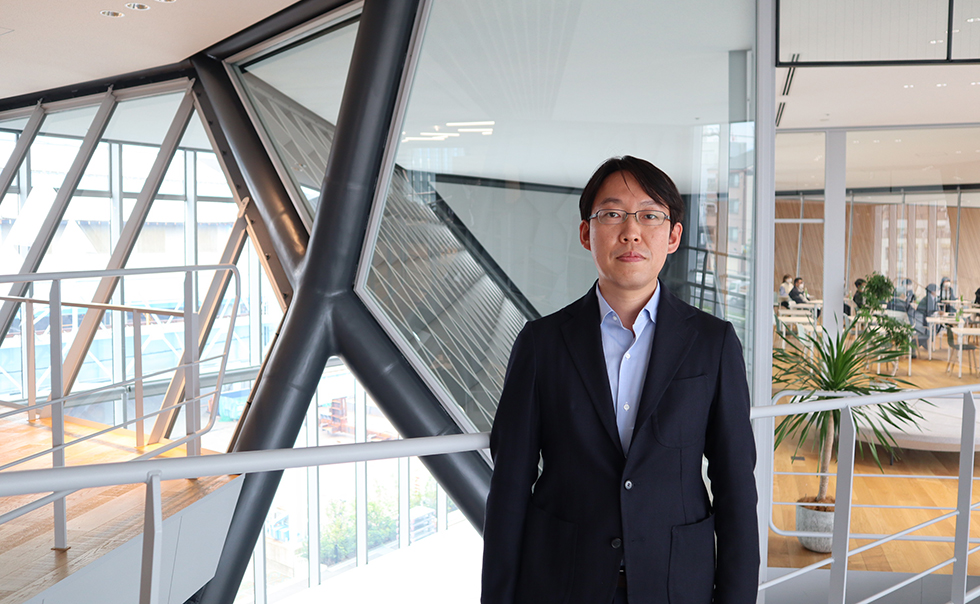
In charge of structural engineering, Masahito Ono
When I saw the design of "Voronoi partitions," I was excited to try something that no one had ever done before, and I also felt a sense of satisfaction with the concept that all structures were made of Steel and that functions and design were compatible. Sheet steel slabs, which are the most distinctive feature of structures, are impressive because we were able to solve problems such as machining and erection by gathering the wisdom of customers and workplaces such as steel fabricators.
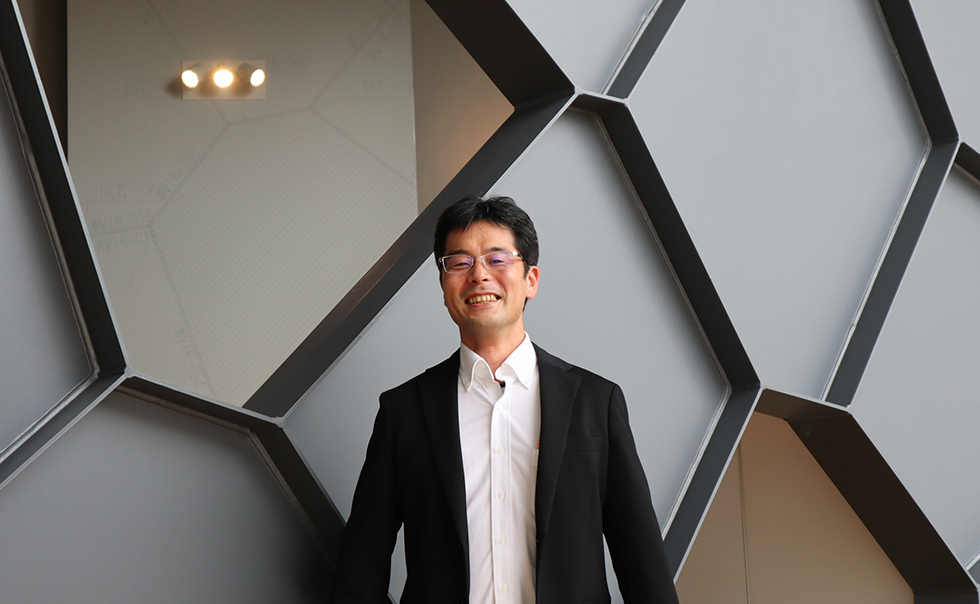
In charge of construction, Masaru Hishinuma
Because many diagonal columns in this building did not stand on their own, the traditional method of erecting from column to beam could not be used. To solve this problem, we installed the rooftop beam first, and then fixed columns to predetermined positions. I thought that no matter how much IT advances, the essence of craftsmanship will not change, and buildings will ultimately be completed by human hands.
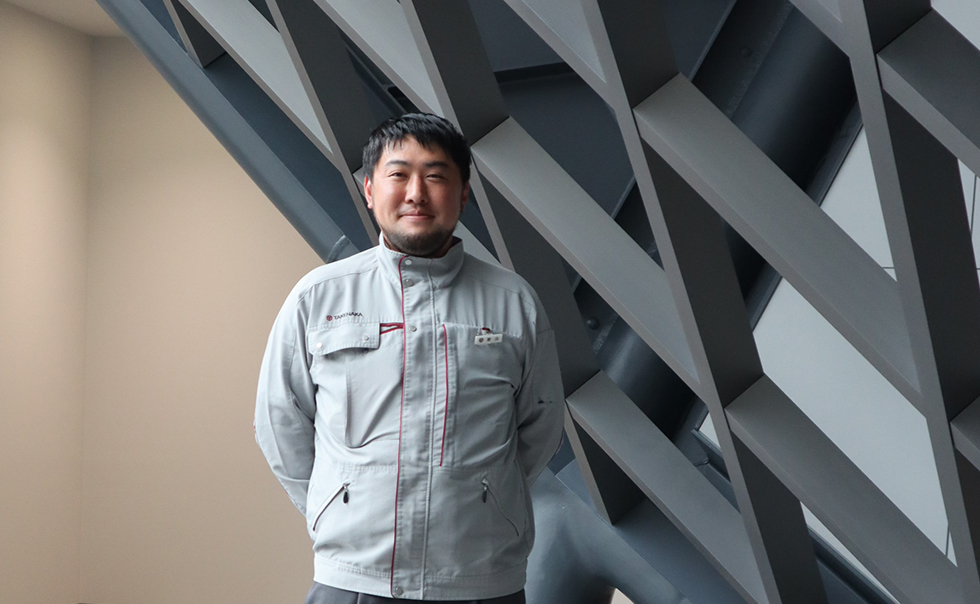
In charge of computational design, Takuma Kawakami
In order to pick up suitable room layout patterns from an enormous number of possibilities, we constructed an algorithm that evaluated room layouts using three indices: room connectivity, angle of the surface matching the intended use, and spatial dynamics. Computational design not only makes designing buildings with complex shapes more efficient and rational, but also opens the door to new architectural ideas.
